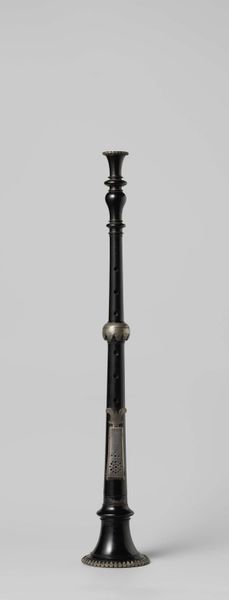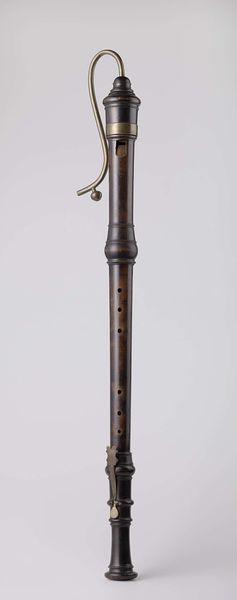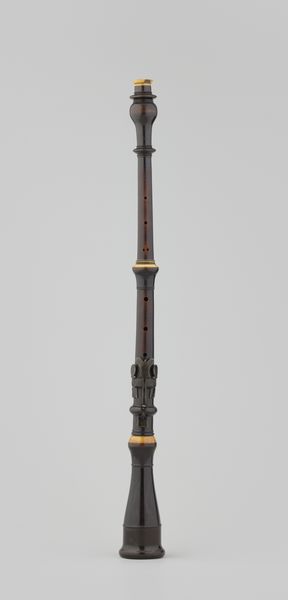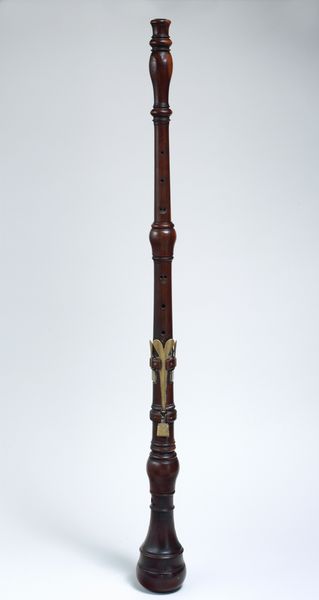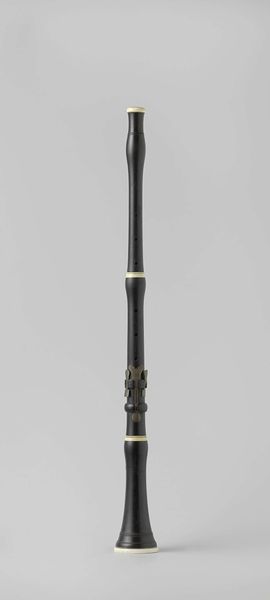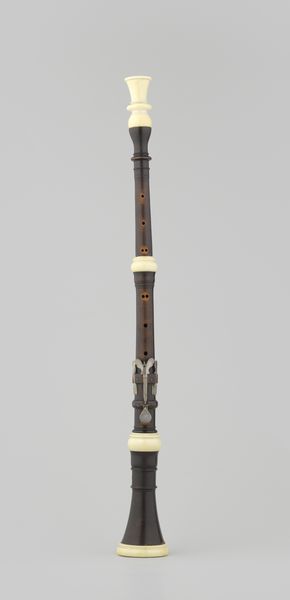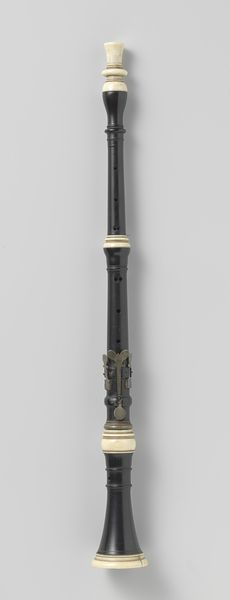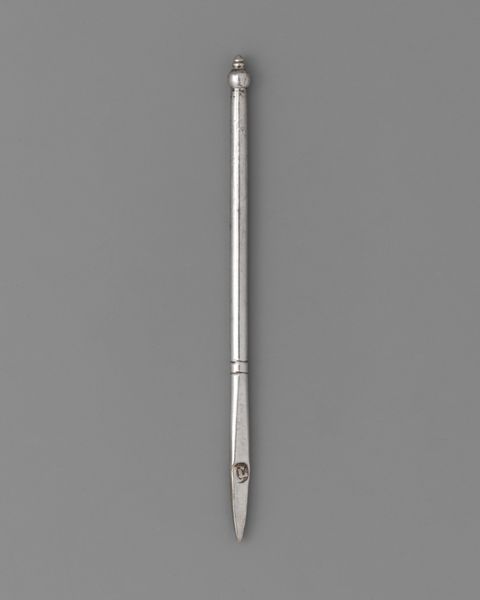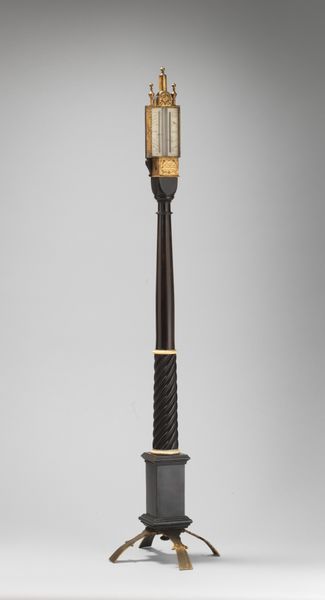
wood
#
baroque
#
sculpture
#
wood
#
decorative-art
Dimensions: length 564.8 mm, diameter 90 mm
Copyright: Rijks Museum: Open Domain
Curator: I wonder what stories it could tell? Editor: This is an oboe from around 1720 to 1750, maker unknown. It's made of wood, a very dark, polished wood, which gives it a somewhat solemn, maybe even severe, appearance. The detailing looks intricate, almost like lace. What draws your eye when you look at it? Curator: Well, its verticality strikes me first. It's so upright, so proper. But look closer – there's an unexpected sensuality to its curves, particularly around the bell. It reminds me of a poised dancer about to take flight. Does it speak to you of any particular time? Imagine the hands that held it, the music that poured forth! What melodies do you think it played? Editor: That’s lovely. I’d imagined concertos and maybe courtly dances. But thinking about who played it… that’s a good point! Someone’s breath made it sing. I see what you mean by the sensual curves too – a hidden grace beneath the formality. It looks very precious, very intentional. Is that a quality you notice in other Baroque decorative art? Curator: Absolutely! The Baroque era often reveled in elaborate detail and contrasting elements. There's this constant push-and-pull between control and exuberance, constraint and freedom. And objects like this oboe perfectly capture that spirit, don't you think? Editor: Definitely. The “poised dancer” metaphor really clicked for me. I think I’ll look at Baroque art differently now. It’s not just ornamentation; it's controlled energy! Curator: Precisely! And that control makes the music all the more powerful, all the more moving. The instrument, silent now, still whispers with the possibility of that power, doesn’t it? A perfect piece of art.
Comments
No comments
Be the first to comment and join the conversation on the ultimate creative platform.
